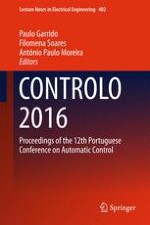2017 | OriginalPaper | Chapter
Quadruple Real Dominant Pole Tuning of a Filtered PID Controller
Authors : Mikuláš Huba, Pavol Bisták
Published in: CONTROLO 2016
Publisher: Springer International Publishing
Activate our intelligent search to find suitable subject content or patents.
Select sections of text to find matching patents with Artificial Intelligence. powered by
Select sections of text to find additional relevant content using AI-assisted search. powered by
